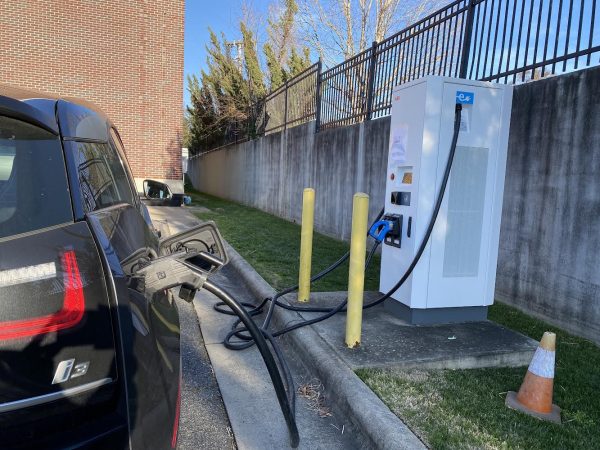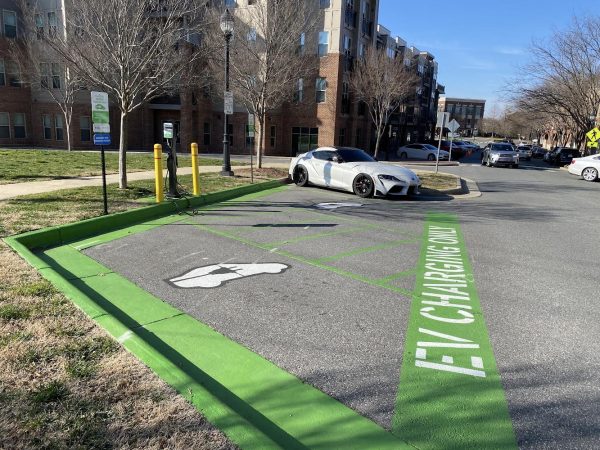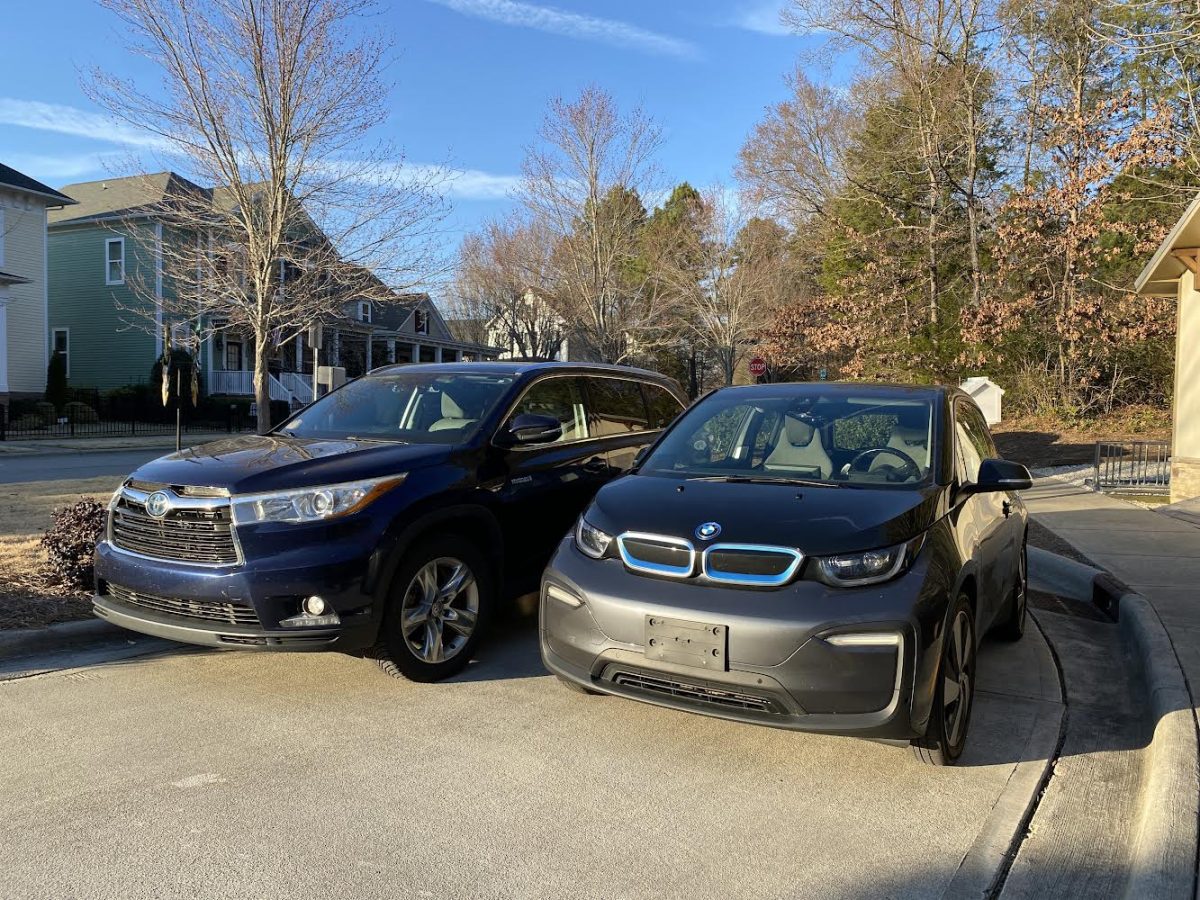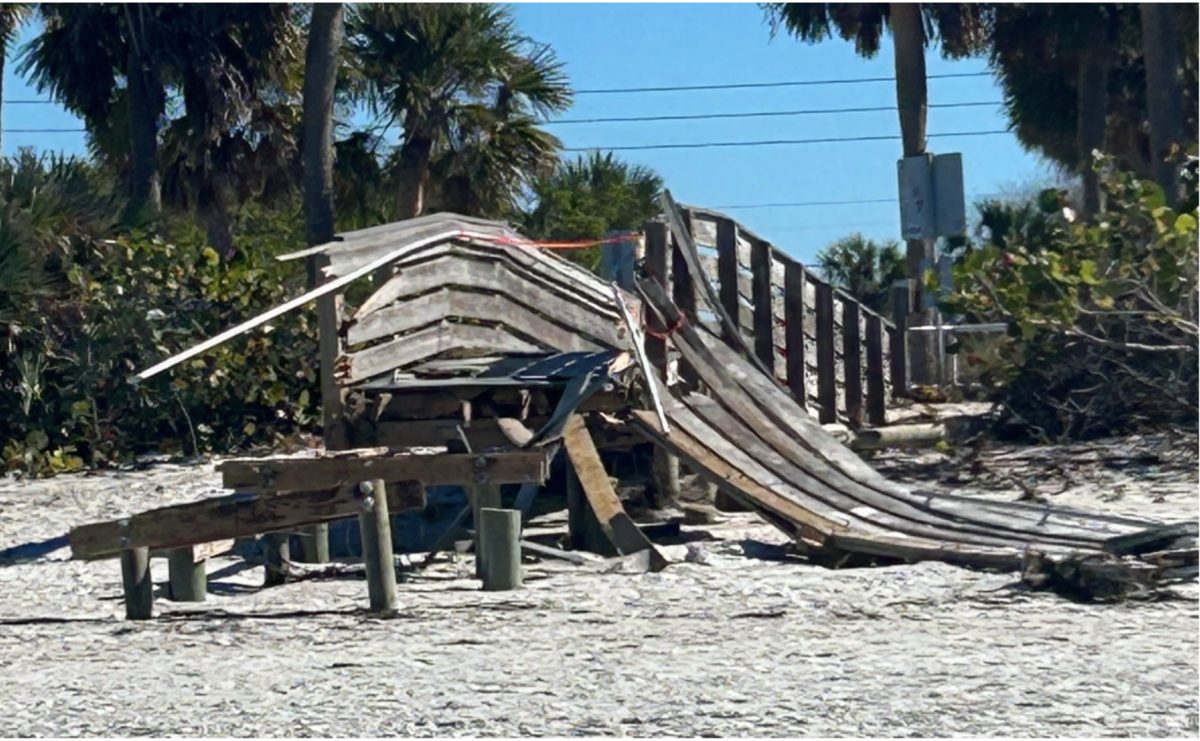After owning a 2015 Toyota Highlander Hybrid for 9 years, my dad, an electrical engineer, decided to test the waters of Electric Vehicles. In 2023 he purchased a used 2018 BMW i3 for just under $16,000. And with the purchase, I got a set of keys, too.
For a while, I had been content enough owning a gas powered vehicle. I know my way around the gas station and I know how much it costs to fill the tank. Even then, I’m one of the high school students who, even with a part-time job, still panics when I see the gas gauge drop to empty because it means I’m about to spend my hard earned money on fuel, not fun, once again.
My dad was intrigued by his new purchase, so I was gifted partial use of the Highlander while he explored the i3. I drove the SUV to and from school while my dad drove the i3 throughout the week.
Because of the i3’s limited range on a full charge, we did swap cars on occasion if he was going on a longer business trip that required the Highlander’s range and ease of refueling.
I actually enjoyed the swaps because the i3 was much cooler on many levels. I loved its slightly bug-like appearance, small size, horsepower, quick acceleration and sharp turn ability that make it feel like a savvy sports car. It’s an eye catcher and a conversation starter. My wallet was happy, too.
The only issue came when I had to keep the EV at my mom’s house and connect the charger to her detached garage’s electrical system for the first time.
Everything seemed to run smoothly as I plugged in the vehicle and went to bed. The next morning I woke up to a tripped garage circuit breaker. Since the garage door wouldn’t work without power, the i3 was trapped inside.
I panicked. Not only was I under a deadline to make first school bell, I was also clueless as to why this had happened.
But the thing with electricity is that solutions are fairly obvious if you understand how it works, and I thought I knew enough. I performed a simple in-house electrical reset, the garage door worked, the car was up and running for the day, and I was off to school.
I learned my lesson. Or so I thought.
The next night I plugged in the i3 only to wake up to the same fate. By this point, I didn’t know what to do. I contacted my dad and asked his thoughts on what the issue could be. He pointed out that my mom’s garage, which also contained a freezer running on the same circuit, was the likely culprit. The draw of both was too much for the system to handle, so it gave up and tripped.
Electric Vehicle chargers have multiple electrical current settings, so I made an adjustment. Since then, I’ve switched to a lower current setting that slightly increases the car’s charge time to a slower rate, but thankfully doesn’t cause any further issues.
The transition to renewable energy sources is happening but still has its issues.
A December 2023 article by CNN explains that Americans bought more than one million EV’s throughout the year, becoming the record high of EV sales.
Similarly, according to a July 2023 article by the Pew Research Center, 38% of adults in the U.S. say that they’re likely to consider purchasing an EV the next time they browse the vehicle market.
There’s a reason many people are now more keen to buy one. EVs have many benefits. Eliminating gas costs, less required maintenance and their positive impact on the environment are the top reasons.
However, there are still drawbacks. The lesson I learned in my mom’s garage can be applied to the larger national electric grid. With current charging methods, a sharp increase in electric cars would cause utility systems to fail.
Though the use of EV’s significantly reduces greenhouse gas emissions, power plants can only support a certain influx of electricity demand. If everybody were to swap out their gas cars to electric at once, the power plants would suffer.
One of the most widely discussed issues of EV’s is their impracticality when it comes to longer road trips. There is a need to make many more charging stops, and the longer wait that comes with slower charging speed creates a need to find something to do while you wait.
Right now, the two main methods for out-of-house EV charging, fast-charging stations set up along highways and the more hidden fast-charging stations close to desolate checkpoints offer opportunities if they can work through current setbacks.
I go to school in Davidson, North Carolina, and see opportunities in my community. Whole Foods, a well-known grocery store chain, has had available EV chargers at my local Huntersville location which just happens to be off a major highway exit. They became easy to find and use.
In contrast, just down the road in the town of Cornelius, there is a charger down the road from a popular lunch restaurant named Tenders (“PDQ”), but many EV users find it difficult to locate.

What we should be aiming to establish is the middle-ground for these. More public charging stations and better locations would garner more use. Cars lineup and wait at locations like Whole Foods while the stations near Tenders sit unused.
And as people pick their view on the EV industry, North Carolina isn’t the friendliest just yet, but Governor Roy Cooper supports the rise of EVs. He has discussed an aim to have 80,000 registered ZEVs (Zero Emission Vehicles) in the state by 2025. By November 2023, that number was already at about 60,000.
Opportunities for solar charging are easier than they appear
Transitioning these stations as well as adding new ones to businesses powered by solar energy is an opportunity worth exploring. Consider how convenient it would be if someone could leave their EV at a nearby charging station while they shop.
Less than a mile from Whole Foods, the Huntersville Target uses hundreds of rooftop solar panels to generate electricity for the store. Most IKEA buildings, like the one in Charlotte, have also invested in solar panel setups to combat the amount of electricity cost required to power the larger stores. While neither of these stores currently offer EV charging, if they could add stations powered by their current solar panels, opportunities and usage would increase.
These companies could also see an increase in profit at the same time. Due to the low cost for charging, these companies could entice customers with a low to zero rate for each charge and the EV owners could browse their store in the meantime. People are more likely to leave their EV charging for a longer period of time if they have something to do and by adding stations this not only entertains the customers but also earns the company more money as the people shop and find more items to buy as the time they spend in the store increases.
Larger businesses already have larger parking lots, so by setting up charging stations wired to their current solar collectors, they would effectively be better using their current spaces, too.
Solar charging has a place at home
With a strong background in solar technology and its many applications, my dad installed 16 solar panels on our roof soon after we moved in and unpacked. He later modeled our setup after the more common home charging stations which are gaining popularity in various European countries.

With some trial and error, he was able to connect the panels to the car’s charging system, which works well given the level of sunlight in our community. When I plug the car into my dad‘s garage, I no longer have to worry about charge settings and blown fuses.
The average at-home i3 vehicle charge is approximately $3.50 – $4.50 for a full battery, but the use of solar technology virtually eliminates even that low fee. The cost to charge it at home is now next to nothing.
Not only has owning the i3 made my dad and I think about how EVs best fit our lifestyles, but by thinking about how solar power can strengthen the equation, it has, in a wider sense, also helped us see a bigger, brighter opportunity for EV’s to improve everyone’s future.









Kim Keith • Feb 22, 2024 at 10:19 am
Well done, Kate!
Eric • Feb 21, 2024 at 5:02 pm
The article is very interesting. I enjoyed that it related to actual human experience. I appreciate that it contained both pros and cons on the subject of electronic cars. I look forward to your next article.